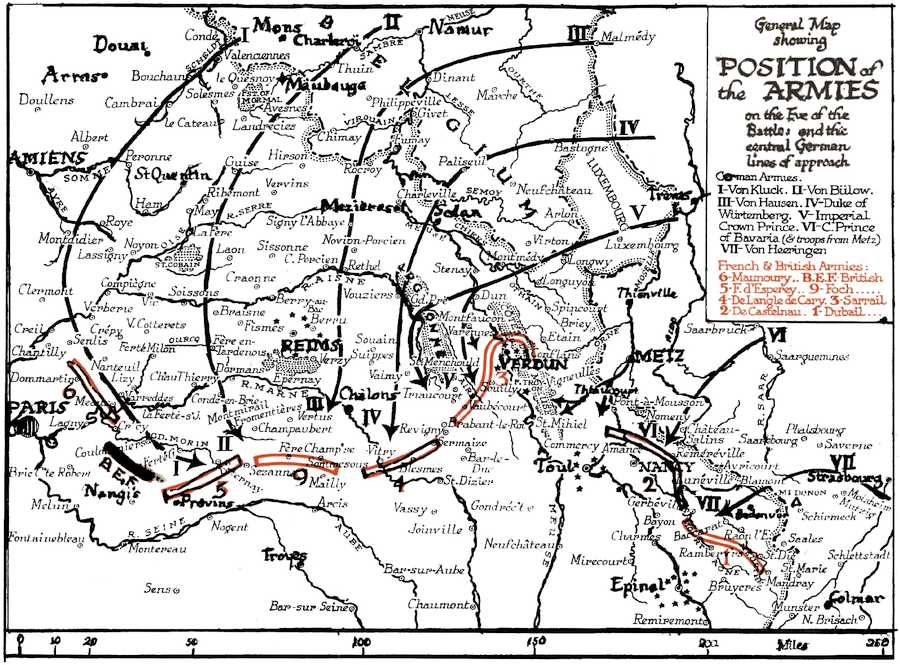THE BATTLE OF THE MARNE
IN MEMORIAM
N. F. P. + E. L. P.

General Map showing
POSITION of the ARMIES
on the Eve of the Battle, and the central German lines of approach.
German Armies.
I–Von Kluck. II–Von Bülow.
III–Von Hausen. IV–Duke of Würtemberg.
V–Imperial Crown Prince.
VI–C. Prince of Bavaria (& troops from Metz).
VII–Von Heeringen.
French & British Armies:
6–Marmoury. B.E.F. British.
5–F. d’Espérey. 9–Foch.
4–DeLangle de Cary. 3–Sarrail.
2–DeCastelnau. 1–Dubail.
THE BATTLE OF
THE MARNE
BY
GEORGE HERBERT PERRIS
SPECIAL CORRESPONDENT OF “THE DAILY CHRONICLE”
WITH THE FRENCH ARMIES, 1914–18
WITH TWELVE MAPS
JOHN W. LUCE & CO.
BOSTON
MCMXX
The great war has entered into history. Therestraints, direct and indirect, which it imposedbeing gone with it, we return to sounder testsof what should be public knowledge—uncomfortabletruths may be told, secret places explored. At thesame time, the first squall of controversy in Franceover the opening of the land campaign in the Westhas subsided; this lull is the student’s opportunity.No complete history of the events culminating in thevictory of the Marne is yet possible, or soon to beexpected. On the German side, evidence is scantyand of low value; on that of the Allies, there is yet apreliminary work of sifting and measuring to undertakeere definitive judgments can be set down. Any narrativeconceived in a scientific, not an apologetic orromantic, spirit may claim to further this end.
The difficulty lies less in following the actual movementsof that great encounter—the most important ofwhich, and their part in the result, can now be tracedpretty accurately—than in estimating the factors thatproduced and moulded it. Yet, if we are right inviholding the battle of the Marne to be essentially thecompletion of a chapter, the resultant of certain designsand certain misadventures, a vast strategical reversaland correction, such an estimate is necessary to thesubject. How did the two chief antagonists envisagethe process of modern warfare? Why was the actionwhich was to close the first phase of the war, andlargely to shape its after-course, fought not near thenorthern or eastern frontiers, but between Paris andVerdun? Why and how were the original plans ofcampaign modified to reach this result? What conditionsof victory existed on the Marne that had beenlacking on the Sambre? In a word, the key to